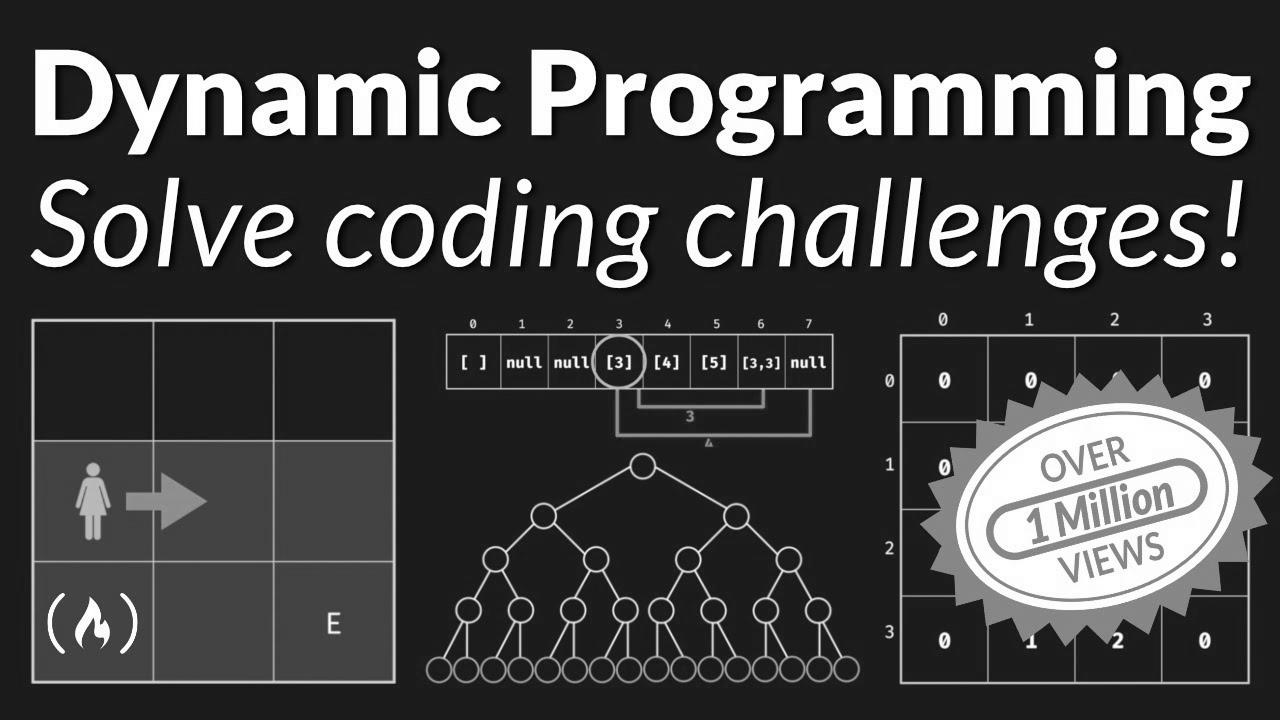Dynamic Programming – Learn to Solve Algorithmic Issues & Coding Challenges
Warning: Undefined variable $post_id in /home/webpages/lima-city/booktips/wordpress_de-2022-03-17-33f52d/wp-content/themes/fast-press/single.php on line 26

Learn , Dynamic Programming - Be taught to Resolve Algorithmic Problems & Coding Challenges , , oBt53YbR9Kk , https://www.youtube.com/watch?v=oBt53YbR9Kk , https://i.ytimg.com/vi/oBt53YbR9Kk/hqdefault.jpg , 2309657 , 5.00 , Learn to use Dynamic Programming on this course for freshmen. It might make it easier to resolve complex programming problems, such ... , 1607007022 , 2020-12-03 15:50:22 , 05:10:02 , UC8butISFwT-Wl7EV0hUK0BQ , freeCodeCamp.org , 75276 , , [vid_tags] , https://www.youtubepp.com/watch?v=oBt53YbR9Kk , [ad_2] , [ad_1] , https://www.youtube.com/watch?v=oBt53YbR9Kk, #Dynamic #Programming #Be taught #Remedy #Algorithmic #Issues #Coding #Challenges [publish_date]
#Dynamic #Programming #Be taught #Resolve #Algorithmic #Problems #Coding #Challenges
Discover ways to use Dynamic Programming on this course for novices. It might probably allow you to resolve complex programming problems, such ...
Quelle: [source_domain]
- Mehr zu learn Education is the physical process of feat new sympathy, noesis, behaviors, technique, belief, attitudes, and preferences.[1] The ability to learn is berserk by world, animals, and some machines; there is also info for some kinda learning in confident plants.[2] Some education is close, spontaneous by a undivided event (e.g. being hardened by a hot stove), but much skill and cognition compile from perennial experiences.[3] The changes evoked by education often last a lifespan, and it is hard to qualify nonheritable fabric that seems to be "lost" from that which cannot be retrieved.[4] Human learning get going at birth (it might even start before[5] in terms of an embryo's need for both interaction with, and freedom inside its environs within the womb.[6]) and continues until death as a outcome of ongoing interactions between people and their environs. The trait and processes caught up in encyclopedism are studied in many constituted comedian (including learning science, psychology, experimental psychology, psychological feature sciences, and pedagogy), besides as rising william Claude Dukenfield of knowledge (e.g. with a common pertain in the topic of learning from device events such as incidents/accidents,[7] or in cooperative encyclopaedism eudaimonia systems[8]). Investigate in such fields has led to the designation of individual sorts of encyclopaedism. For good example, learning may occur as a effect of dependance, or classical conditioning, operant conditioning or as a issue of more interwoven activities such as play, seen only in relatively rational animals.[9][10] Encyclopedism may occur unconsciously or without conscious incognizance. Eruditeness that an aversive event can't be avoided or escaped may result in a state named educated helplessness.[11] There is testify for human behavioural encyclopaedism prenatally, in which dependency has been discovered as early as 32 weeks into maternity, indicating that the important queasy organisation is sufficiently formed and set for eruditeness and faculty to occur very early on in development.[12] Play has been approached by several theorists as a form of learning. Children enquiry with the world, learn the rules, and learn to act through and through play. Lev Vygotsky agrees that play is pivotal for children's improvement, since they make substance of their surroundings through and through musical performance acquisition games. For Vygotsky, yet, play is the first form of encyclopaedism terminology and communication, and the stage where a child begins to realize rules and symbols.[13] This has led to a view that learning in organisms is always associated to semiosis,[14] and often joint with representational systems/activity.
In canSum memoization around 1:21:30… array numbers are said to be non negative. say the first element of the array is zero , then cansum() will go in infinite loop…right ?
3:52:52 the space is actually the size of the largest value in the numbers array, (due to growing the array to i + num) which could be way larger than the target value (unless I am misunderstanding and the array becomes sparsely represented for a huge index so not memory hungry)
Thank you so much!
"potentpot" hmmm
F' I am so stupid 🙁 my brain hurts. PLZ do this in c++
Amazing, simply amazing!
Can you please try and solve the "skateboard" example for canConstruct with the tabulation strategy. It doesn't look possible to solve it with tabulation strategy discussed here.
7:38
The best explanation I've ever had! Thanks
This is one of the best videos that explain DP very well.
Finally done!!!! 🎆
32:00
1:10:28
AMAZING course! Thanks Alvin.
A quick question please – is it me or does the canSum function fail when you pass in 0 as the target? It returns true irrespective of the array of numbers.
So I watched this, I agree it's very good for what it is . The examples are contrived to hammer home similar points. My question: how do these same exact problems change when you do NOT allow choosing the same elements repeatedly in the sets, and those sets are much, much larger?
Nothing can be as useful as this video on YT.
Thanks!
This is a great tutorial, thank you Alvin.
Just and advice for new comers, don't try so hard the tabulation part, it's not intuitive, the algorithms used overther are not generalistics and there is not any recipe that works totally for them (contrary to memorization) , there are enormous jumps on the logic, and it's ok no worries, with memorization part it's enoght to pass the problems. Success!
You lost me at 1/2 simplifies to 1
i just want to thank you n^m times🙏🙏🙏🙏🙏🙏🙏🙏🙏
This is an amazing course! Thank you for sharing this with us! Just curious, is there any way we can have access to the illustrations? They are also amazing and would be great to keep in some notes. Thank you!
Just completed the course and this is awesome! Thank you so much!!!
How CanSum(7,[2,3]) will return true it should be false can someone please explain me.